Famous as one of the most extreme places on the planet with temperatures reaching up to 54 degrees Celsius, the Afar region in East Africa is attracting special attention from geologists.
Not only because of the harsh climate conditions, but also because of what is happening deep below the scorching earth: a new ocean is quietly forming, with the potential to split the African continent in two.
The Afar region lies at the intersection of three giant tectonic plates – Nubian, Somali and Arabian – that are slowly pulling apart. This process, known as continental rifting, is not only reshaping the landscape, but also giving scientists a rare opportunity to study firsthand how continents are breaking apart and a new ocean is forming.
“This is the only place on Earth where you can study how continental rifts become oceanic rifts,” Christopher Moore, a PhD student at the University of Leeds who uses satellite radar to monitor volcanic activity in the area, told NBC .
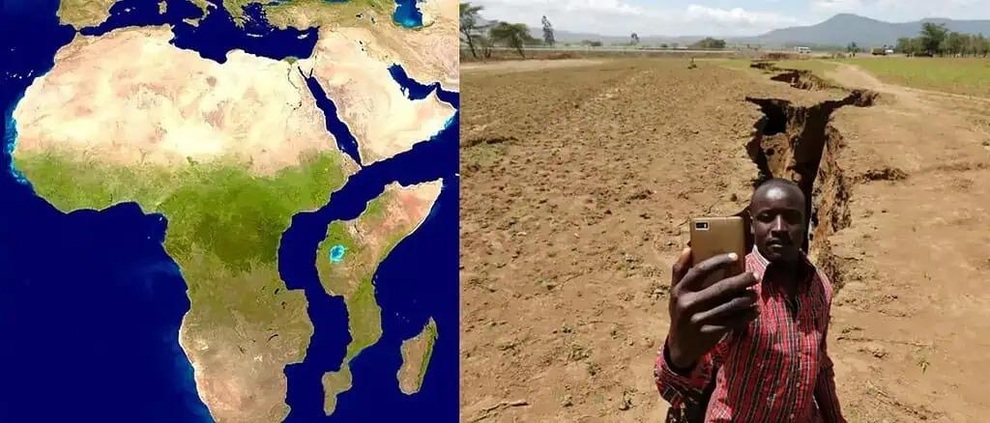
Giant natural geological laboratory
The Afar region is home to the East African Rift Valley, a giant crack in the Earth’s surface that stretches across Ethiopia and Kenya. In 2005, a fissure measuring 56 kilometers long, more than 15 meters deep, and 20 meters wide suddenly opened up in the Ethiopian desert. Rift valleys are lowlands where tectonic plates are diverging, or moving apart.
Cynthia Ebinger, a geophysicist at Tulane University who has spent years studying the area, likens the process to overfilling a balloon.
“This violent separation is equivalent to hundreds of years of plate movement in just a few days,” she said. Ebinger’s research also shows that the rifting process is not always smooth, but can be interrupted by sudden explosive events, driven by pressure building up from rising magma, eventually forcing the Earth’s crust apart.
Over time, these rifts would grow larger, and the Gulf of Aden and the Red Sea would flood into the rift, creating a new ocean. At that point, Africa would split into two continents: a smaller continent that would include present-day Somalia and parts of Kenya, Ethiopia, and Tanzania; while a larger continent would include all of the rest of Africa.
“A rift like this eventually split Africa and South America apart to form the Atlantic Ocean, and the East African rift may be the first stage of that process,” said Christy Till, a geologist at Arizona State University. “It’s a very slow process that takes millions of years.”
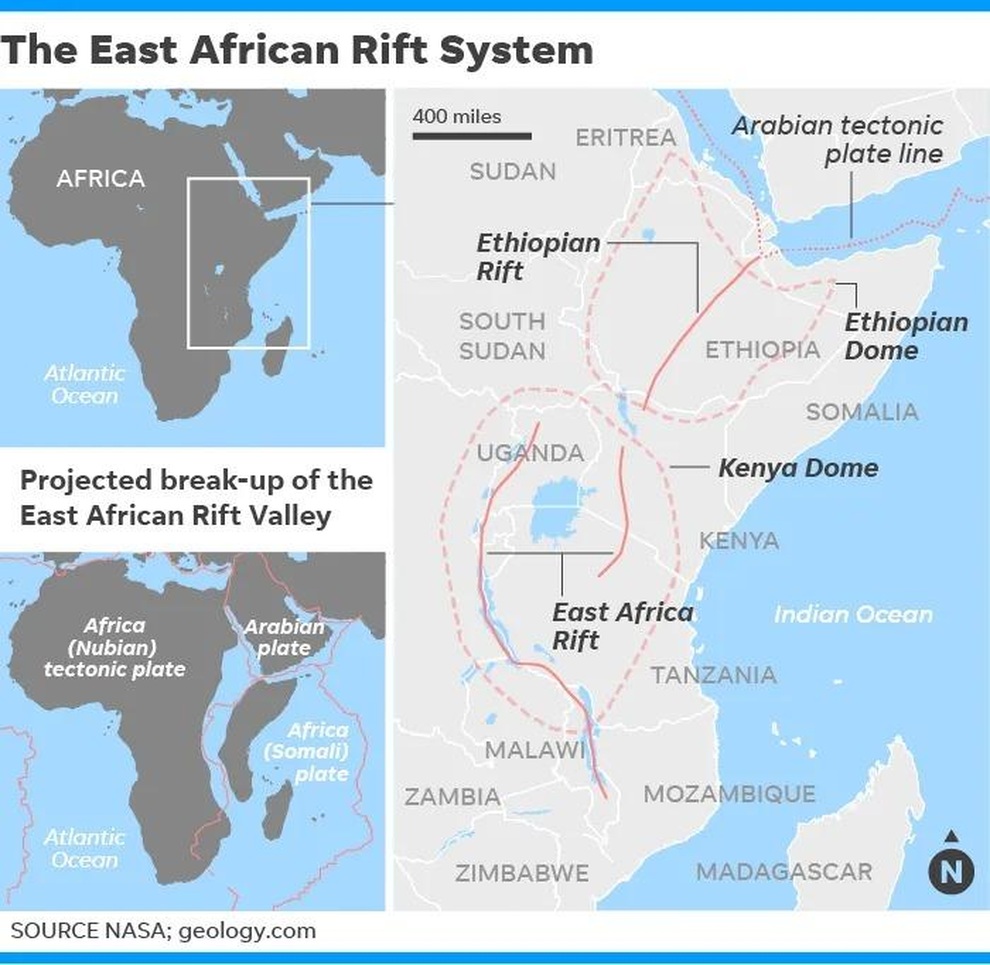
GPS Technology and the “Sixth Ocean”
Scientists have been studying the African rift for decades, but modern technology has gradually changed the way scientists do their research. GPS devices allow researchers to measure the movement of tectonic plates with incredible precision, down to a few millimeters per year.
The Arabian Plate is moving away from Africa at a rate of about 2.5 cm per year, while the Nubian and Somali Plates are moving apart more slowly, at between 1.25 cm and 0.2 cm per year, says Ken Macdonald, a marine geophysicist and professor emeritus at the University of California, Santa Barbara. These movements may seem insignificant, but over millions of years they will completely reshape the region.
As the plates pull apart, material from deep within the Earth rises to the surface, forming new oceanic crust. “We can see oceanic crust starting to form because it is so different from continental crust in composition and density,” Moore explains.
Scientists estimate that it will take at least 5 to 10 million years for the Afar region to be completely submerged. At that time, the Gulf of Aden and the Red Sea will overflow into the rift, creating a new ocean basin, turning the Horn of Africa into a separate small continent, and this is the future “sixth ocean” of the Earth.
Today, the Afar region remains an extremely harsh land. Daytime temperatures often reach 54 degrees Celsius, only dropping to a “comfortable” 35 degrees Celsius at night.
But for scientists like Ebinger, it's a natural laboratory that offers unprecedented insights into the forces shaping our planet.
“It’s been called Dante’s inferno,” she said. But for those willing to endure the heat, it’s a window into Earth’s geological future, a future in which Africa is no longer one continent, but two, divided by a new ocean.
Source: https://dantri.com.vn/khoa-hoc/dai-duong-thu-6-dang-hinh-thanh-chia-tach-dong-phi-thanh-hai-luc-dia-20250725073245097.htm







![[Photo] Opening of the 14th Conference of the 13th Party Central Committee](https://vphoto.vietnam.vn/thumb/1200x675/vietnam/resource/IMAGE/2025/11/05/1762310995216_a5-bnd-5742-5255-jpg.webp)





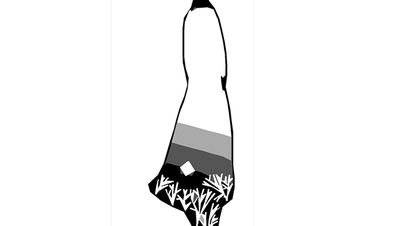









![[Video] Not Alone - Online Safety Day](https://vphoto.vietnam.vn/thumb/402x226/vietnam/resource/IMAGE/2025/11/05/1762347906381_sequence-0100-00-17-02still001-jpg.webp)
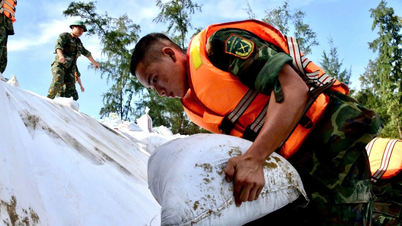





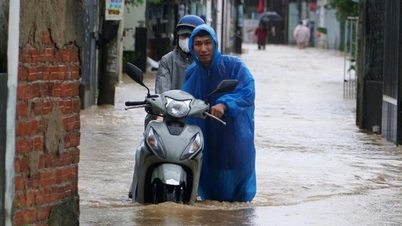




![[Photo] Panorama of the Patriotic Emulation Congress of Nhan Dan Newspaper for the period 2025-2030](https://vphoto.vietnam.vn/thumb/1200x675/vietnam/resource/IMAGE/2025/11/04/1762252775462_ndo_br_dhthiduayeuncbaond-6125-jpg.webp)

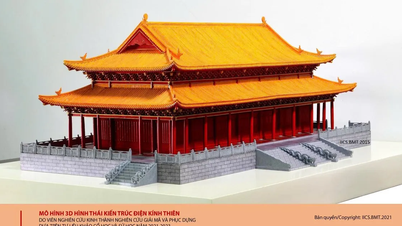





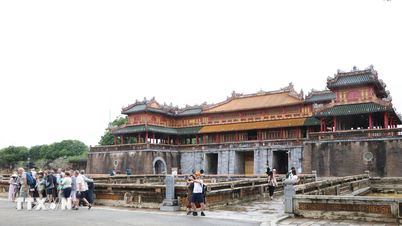








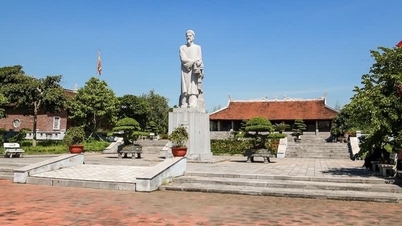






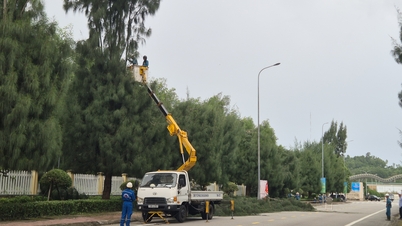










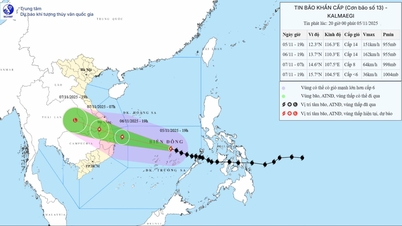


















![[Motion Graphics] 5 notes when converting from lump-sum tax to declaration](https://vphoto.vietnam.vn/thumb/402x226/vietnam/resource/IMAGE/2025/11/06/1762381214740_fb_thoi-tiet-cms-1200x800-3.jpeg)


















Comment (0)